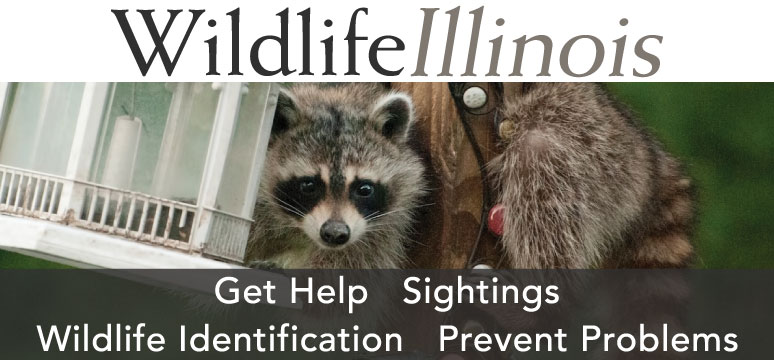
Photo by Illinois Department of Natural Resources.



Photo by Illinois Department of Natural Resources.
Keeping up with cutting-edge wildlife research, as well as changes in state and national wildlife-oriented programs and legislation, can be a daunting task. Here we briefly summarize some of the key work taking place that will be of interest to wildlife enthusiasts.

Why all the fuss about the presence of wild pigs on the landscape? A study reported in the Journal of Wildlife Management has documented that the removal of wild pigs in Alabama helped boost the wild turkey population. Wild pigs eat bird eggs, may compete with turkeys for food and may scare them off an area. After removing pigs from sites, turkeys were detected twice as often as when pigs were present. While researchers don’t believe that wild pigs are the sole reason for the decline of turkeys in Alabama, the study offers a suggestion for bolstering the turkey population.
Chronic wasting disease (CWD), an always fatal disease in ungulates, is present in 32 states and five Canadian provinces and has become an increasingly troubling wildlife management issue. Confirming the presence of the disease in live animals is difficult and trained dogs may be key to noninvasive detection of the disease. Dogs trained in the study were familiarized with the scent of CWD infection then exposed to fecal samples from both wild and captive white-tailed deer and trained to identify an infection in gastrointestinal tract tissue samples. A dog’s ability to detect an infection in this manner could prove to be a powerful and money-saving tool for those managing captive deer herds, and perhaps used at CWD hunter check stations.

Chronic wasting disease (CWD) is spread through prions ungulates shed through bodily fluids, such as feces, urine, blood and saliva. One likely indirect CWD transmission pathway in white-tailed deer is through their scraping behavior. Scrapes are circular areas cleared of debris and created by bucks during the breeding season. Bucks will urinate on the area, rub their face on it and lick a low-hanging branch. Other deer visit the scrape and repeat these behaviors. Researchers from the Wildlife Services-National Wildlife Research Center (NWRC), Southern Illinois University and the University of Wisconsin-Stevens Point recorded visits and deer behaviors at scrapes throughout DeSoto National Wildlife Refuge in Iowa. In a second study, researchers at the NWRC, Mississippi State University, Mississippi College, University of Wisconsin-Madison and the University of Tennessee analyzed samples from more than 100 deer scrape sites in Tennessee and found evidence of prion contamination. These findings support the idea that scrapes could serve as early warning sentinel sites for CWD surveillance.
To try and predict outbreaks, researchers are tracking the movement and behavior of deer infected with chronic wasting disease (CWD). Wyoming mule deer that were part of a GPS tracking study were necropsied to determine the cause of death. Reviewing the GPS location data revealed a distinct pattern that made CWD-infected deer detectable based on those animals’ movement about four to six months before they died. Infected deer begin to slow down and move to lower elevations. Knowing the movement patterns of infected deer helps to identify likely hotspots for direct and/or indirect transmission of CWD. The study was study published in Ecology and Evolution.

Researchers from the Animal and Plant Health Inspection Service’s Wildlife Services at the U.S. Department of Agriculture found that translocating American kestrels away from airports seems to keep most of them away, which means fewer aircraft strikes. The large, flat areas of airports attract prey species like rodents and large insects, which draw raptors such as kestrels. In a study published in the Wildlife Society Bulletin, kestrels removed between 2015 to 2021 from 42 airports across 14 states were monitored to see if they returned. Only about 5 percent of kestrels returned to the airport from which they were removed. Researchers noted the birds only needed to be moved about 15 miles away. For now, it appears that translocation can be an effective management technique for kestrels at airports.
In a recent study published in Global Environmental Change Advances, researchers found climate change plays the greatest role in ongoing bird declines in North America. The research project was completed at the University of Illinois Urbana-Champaign. Reviewing data from the North American Breeding Bird Survey, population trends were reviewed between 1980 and 2015 with climate data from the same timeframe. The largest drop in the number and diversity of birds occurred for specialist species (such as the red-cockaded woodpecker and spotted owl) and migratory birds. Researchers note that migratory birds may have trouble keeping up with a changing environment because of generations-long patterns of migration. The analysis also projects scenarios for the years 2095 to 2099, with still greater declines.

In Idaho, barn owl populations are thriving but collisions with vehicles still take a toll. The region around Boise has seen a boom in urban growth—and also a boom in barn owl nest boxes placed to provide natural rodent control. Flying over roadway in search of prey can be problematic for owls and lead to fatal collisions with vehicles. In a 2012 study published in the Journal of Wildlife Management, researchers found that barn owls are hit more in Idaho than anywhere else in the world. A follow-up study published in the Journal of Wildlife Management summarized monitoring of nest boxes during the 2020 and 2021 breeding seasons. Barn owls occupied more than 60 percent of the boxes, but the owls preferred to be away from roads. Additionally, nests close to roads were likely to produce one fewer fledgling than those farther away. Biologists in Switzerland recently reached similar conclusions.
In eastern New York, some wood frogs are evolving to live longer in high salt conditions due to road salt applications. Recent research has shown that road salt used to melt ice and snow on roads can wash into wetlands, stunt the growth of animals and cause frogs to change their sex. In a study of the salt accumulating in wetlands, some wetlands had very low salt concentrations, but other wetlands had salt concentrations that were 200 times higher. Surprisingly, frogs were still laying their eggs in those wetlands. Published in Ecology and Evolution the purpose of the study was to examine how tolerant wood frogs were to salt. Eggs were collected from nine different populations during the spring from areas of different salt concentrations and the resultant tadpoles placed in containers with either no salt or concentrations of salt that could probably kill them. The tadpoles all survived in the water without salt. Tadpoles originating from areas with less salt didn’t survive the salty water. Tadpoles from frogs living in salty conditions survived the salty water. Reduction of the use of road salt is happening in many communities, without compromising road safety, which is a step toward saving aquatic habitats and organisms.
Kathy Andrews Wright retired from the Illinois Department of Natural Resources where she was editor of OutdoorIllinois magazine. She is currently the editor of OutdoorIllinois Journal.
Submit a question for the author